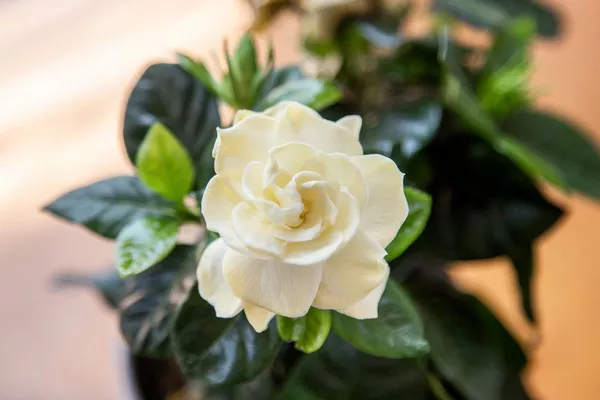Growing a stunning display of gladiolus flowers in your garden is a rewarding experience that adds elegance and vibrant colors to your outdoor space. Gladiolus, often referred to as the “sword lily” due to its sword-shaped leaves, is a versatile and easy-to-grow flower that graces gardens, floral arrangements, and events with its tall spikes of blossoms. In this comprehensive guide, we will explore the step-by-step process of growing gladiolus flowers, from selecting the right bulbs to ensuring optimal care for a breathtaking floral showcase.
Selecting High-Quality Gladiolus Bulbs
The foundation of a successful gladiolus garden begins with the selection of high-quality bulbs. When choosing bulbs, prioritize those that are firm, plump, and free from any signs of rot or damage. The size of the bulb is also an important factor, as larger bulbs often produce more robust and prolific blooms.
When purchasing gladiolus bulbs, pay attention to the specific varieties available. Gladiolus flowers come in a wide array of colors, sizes, and shapes, allowing you to customize your garden to suit your aesthetic preferences. Popular varieties include the vibrant and classic Grandiflora types, as well as the unique and frilly Gladiolus nanus hybrids.
Choosing the Right Planting Site
Gladiolus flowers thrive in well-drained soil with plenty of sunlight. Select a planting site that receives at least six to eight hours of direct sunlight each day. Ensure that the soil is loose, well-draining, and enriched with organic matter. Gladiolus bulbs are susceptible to rot in waterlogged conditions, so a location with good drainage is crucial.
To improve soil fertility, incorporate well-rotted compost or aged manure into the planting area. A slightly acidic to neutral pH range of 6.0 to 7.5 is ideal for gladiolus cultivation. If your soil is heavy or clayey, consider adding sand to enhance drainage.
See Also: How to make pressed flower art?
Planting Gladiolus Bulbs
Timing is crucial when planting gladiolus bulbs, and the process can be done in either the spring or early summer. In cooler climates, it’s advisable to wait until the soil has warmed up before planting to ensure optimal germination and growth. For continuous blooming, stagger your planting every two weeks until midsummer.
When planting, dig a hole that is approximately two to three times the height of the bulb. Place the bulb in the hole with the pointed end facing up, and cover it with soil. Space the bulbs about six inches apart to allow for proper air circulation. Water the area thoroughly after planting to settle the soil and initiate growth.
Caring for Gladiolus Flowers
Once your gladiolus flowers are in the ground, providing consistent care is essential for their health and prolific blooming. Here are key care practices to ensure your gladiolus garden flourishes:
Watering: Gladiolus flowers require regular watering throughout their growing season. Keep the soil consistently moist but not waterlogged. Deep watering is preferable to encourage the development of strong root systems.
Fertilizing: To promote robust growth and prolific flowering, fertilize your gladiolus plants regularly. Begin by incorporating a balanced fertilizer into the soil at planting time. As the plants grow, side-dress with a phosphorus-rich fertilizer every three to four weeks until midsummer.
Staking: Gladiolus flower spikes can become top-heavy, especially when in bloom. To prevent bending or breaking, stake your gladiolus plants when they reach a height of about 12 inches. Use stakes or cages, tying the flower spikes loosely for support.
Deadheading: Remove spent flowers regularly to encourage continuous blooming. Deadheading redirects the plant’s energy towards producing new blossoms rather than seed formation. Snip off the faded blooms just above the first set of healthy leaves.
Disease and Pest Management: Keep a vigilant eye on your gladiolus plants for signs of pests such as thrips or diseases like rust. If needed, treat with insecticidal soap or neem oil for pests, and fungicides for diseases, following product instructions carefully.
Overwintering Gladiolus Bulbs: In colder climates, gladiolus bulbs need protection from frost. After the first fall frost, carefully dig up the bulbs, cut off the foliage, and allow them to cure for a few weeks in a cool, dry place. Store the bulbs in a well-ventilated container filled with peat moss or vermiculite until the next planting season.
Designing Stunning Floral Displays
One of the greatest joys of growing gladiolus flowers is the opportunity to create stunning floral arrangements for your home or special occasions. With their tall spikes and diverse colors, gladiolus make a dramatic statement in bouquets and floral displays. Harvest the flower spikes when the first few blossoms open and the rest are in bud for a longer vase life.
Experiment with color combinations and varying stem lengths to create eye-catching arrangements. Mixing gladiolus with other summer blooms, such as dahlias, zinnias, or lilies, can result in breathtaking bouquets that showcase the beauty and versatility of these elegant flowers.
Conclusion
Cultivating gladiolus flowers is a delightful journey that rewards gardeners with an impressive display of color, elegance, and versatility. From selecting top-quality bulbs to providing optimal care, every step contributes to the success of your gladiolus garden. Whether you’re a seasoned gardener or a novice enthusiast, growing gladiolus allows you to enjoy the satisfaction of nurturing these graceful flowers and creating breathtaking floral displays that captivate the eye and enhance the beauty of your outdoor space.


